
The Ultimate 9-Day Japan Itinerary: Osaka, Kyoto and Tokyo
Japan is the perfect destination for anyone who loves nature, vibrant city life and unforgettable good food. One of the best ways for first timers to see Japan is to embark on a multi-city trip to Osaka, Kyoto, Hakone and Tokyo to get a diverse experience. This could be the trip of your life!
Starting in Osaka, also known as the kitchen of Japan, you will be amazed by the bustling food streets that have a wide array of delicacies.
After Osaka, enjoy a laid back time in Kyoto as you explore castles, shrines and bonsai gardens. You also get to see how Japanese design and architecture is embraced throughout the city.
Further north in Hakone, nature lovers will love the serenity of this Onsen town around Lake Ashinoko. Aside from various museums and exhibitions, you can even see Mount Fuji in the distance on a clear day.
Lastly, enjoy a bustling time in Tokyo as you go shopping, izakaya-hopping, and discovering the best food in the country.
- Osaka and Kyoto 6-day itinerary
- Day 1: Arrive in Osaka, Travel to hotel
- Day 2: Visit Osaka Castle, Explore trendy streets, Umeda ferris wheel
- Day 3: Nara Deer Park, More food hunting in Osaka
- Day 4: Travel from Osaka to Kyoto, explore Nijo castle and Gion district
- Day 5: Arashiyama Bamboo Forest, Bonsai garden tour
- Day 6: Fushimi Inari Shrine, Sake Tasting, Shopping
- Hakone Day-Trip Itinerary
- Tokyo 2-Day Itinerary
- Which cities did we like the most – Osaka, Kyoto, or Tokyo?
This article uses affiliate links where I make a small commission if you make a purchase through my links, at no additional cost to you. As an Amazon Associate I earn from qualifying purchases.
Best pass to buy to travel Japan
The new “Klook JR PASS” released in 2024
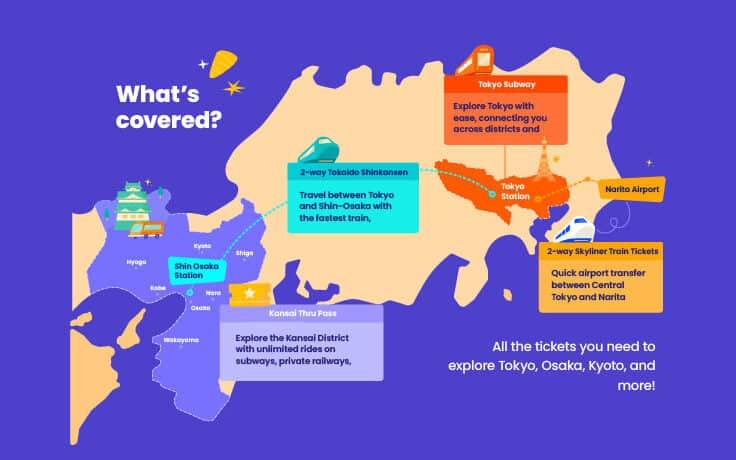
What’s covered:
- Round trip ticket between Narita Airport and Tokyo
- 3 days of unlimited rides on the Tokyo Metro
- 2x Shinkansen Tickets on the Nozomi (fastest line) between Tokyo and Osaka
- Kansai Thru Pass valid for 3 days
Instead of getting the Whole Japan JR Pass (7 days) which has an extra charge for the Nozomi Train ticket, why not save US$130 and get the Klook Value Rail Pass?
I wish we had this option when we were going to Japan! This is probably the cheapest way to get around, while having access to the fastest Nozomi line when you take the Shinkansen.
To avoid fumbling for tickets at the station booths, I recommend booking this pass online to get e-tickets. This makes it super convenient and fuss-free especially for a foreigner.
Osaka and Kyoto 6-day itinerary
It can sometimes be cheaper to fly in to Osaka than Tokyo. This means that you could start your trip in Osaka and Kyoto, then travel up via Shinkansen bullet train to Tokyo. After that, you could either fly straight out of Tokyo or take the Shinkensen train back down to Osaka for your return flight.
Don’t forget to buy a SIM card, or eSIM so you can stay connected and continue to navigate with ease. We got our eSIMs from Airalo previously as it was convenient to buy via their app, affordable and easy to use.
Read more: The Best Places To Stay in Osaka For Food Streets
Day 1: Arrive in Osaka, Travel to hotel
Most flights to Osaka and Kyoto will be via Kansai International Airport (KIX), and it takes around 1 hour to get from KIX to the heart of Osaka. You can buy a ICOCA card (prepaid transport card) from the airport station, and this will come in handy throughout your Japan trip. We added 2,000 Yen to our card as a start as the ride to the city only costs 930 Yen.



If you are arriving in the evening, you should let the accommodation staff know your estimated arrival time as some budget accommodations have a cut-off time for check-ins. That happened to us as our flight landed at 9pm, and we arrived at our hostel at 11:30pm. Even though there was a phone we could use to call, we did not manage to reach anyone.
At that point we were really hungry so we just left our bags at the reception area and went out to Dotonburi for our first meal in Osaka. Thankfully when we returned at 1am and tried calling again, the hostel owner came down to meet us.
We can’t really complain though, since we are only paying about 6,000 Yen per night. We even saw prices dip to 3,000 Yen in off-peak season, so if you’re looking for a decent budget stay, check out 1.2.3 Guesthouse in Nipponbashi on Agoda.
Day 2: Visit Osaka Castle, Explore trendy streets, Umeda ferris wheel
Before anything else – breakfast and coffee! Heading out from our hostel, we walked about 5-10 minutes to Pan-kobo Champignon. This small and almost hidden bakery is popular among locals, and they have a selection of French-style baked goods including croissants and caneles.
Afterwards you can go to SAKImoto Coffee for your daily caffeine. There are outdoor benches for you to sit and drink your coffee as you watch people walk by.



Osaka Castle and nearby food
After fuelling up, head to Osaka Castle via train. It will only take 30 minutes to get there. Osaka Castle is one of the many important historical and cultural landmarks in Japan, and you get to learn interesting things like how they use huge stone slabs to build the fortress walls.
This is one of the must-sees during the cherry blossom season as the pink flowers are set against the gorgeous green colours of the Osaka Castle roof tiles. From time to time, you will see buskers performing in front of the inner castle entrance, adding to the lively atmosphere. Even if you are not a fan of historical sites, this is still worth visiting as the walk is very relaxing.

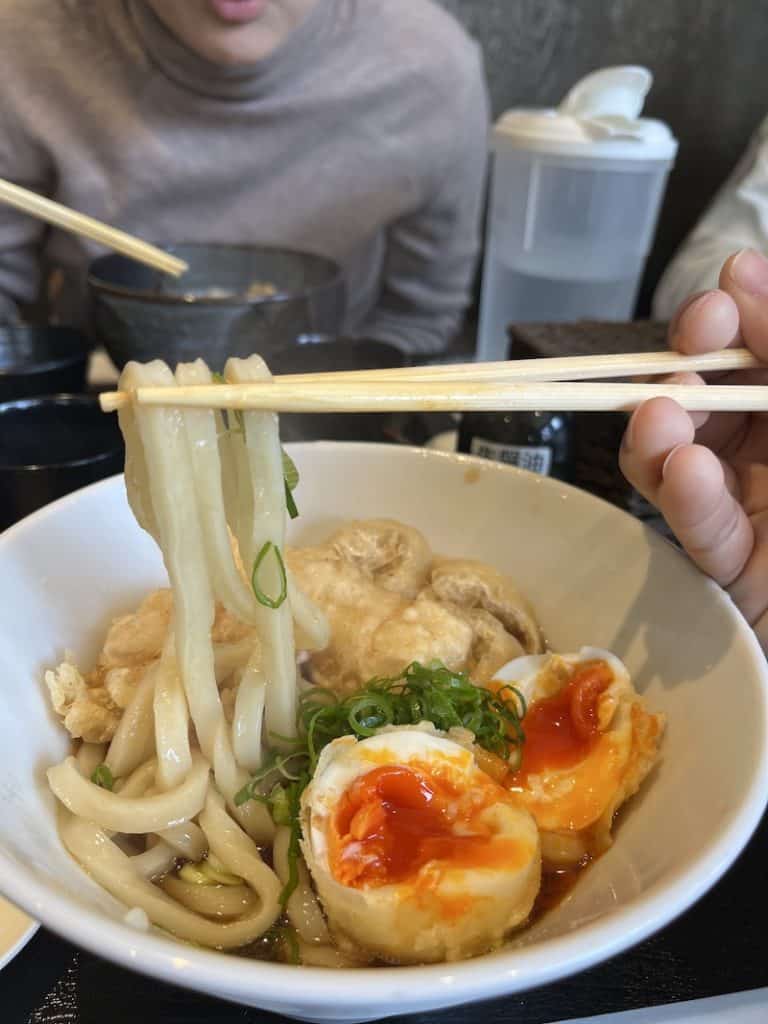

Food options near Osaka castle are likely to be more expensive and catered to tourists. Instead, let’s walk 20 minutes out to look for a hearty Udon meal. Check out Udama 谷町base for their signature chicken tempura and udon that can be served with hot soup or as cold noodles.
Crepe Aimer is just 2 minutes’ walk away from the Udon shop, where you can enjoy various types of Japanese-style crepes for dessert. We tried the Choco Banana flavour, and really enjoyed the soft texture of the crepe.
Nakazakicho and Umeda for cafes and shopping
Next we head to Nakazakicho, where you will find photographic streets lined with cafes, artistic shops, vintage clothes stores. It is a nice place to walk around post-lunch without much of an agenda.








Umeda shopping area is also nearby, and you can head up to the Hep Five Ferris Wheel (above Hep Five mall) for just 600 Yen. It is one of the main attractions of Umeda, and highly accessible. You should go up at around sunset time to enjoy the best panoramic views of the city. Within the Hep Five Mall, check out various Gashapon shops where you can pick up capsule toys as souvenirs.



Dotonburi feasting
The good thing about staying near Dotonburi is that you can take your time to eat and explore the food options over a few days. The large food displays on top of the stores such as the crabs, dumpling, octopus and noodles are sure to make your mouth water. Set aside some time to try Takoyaki, Yakisoba, Crab sushi, 10-Yen Cheese Waffle, Ramen, Dorayaki, Yakiniku, and more! When in doubt, just join the queue wherever you see locals.





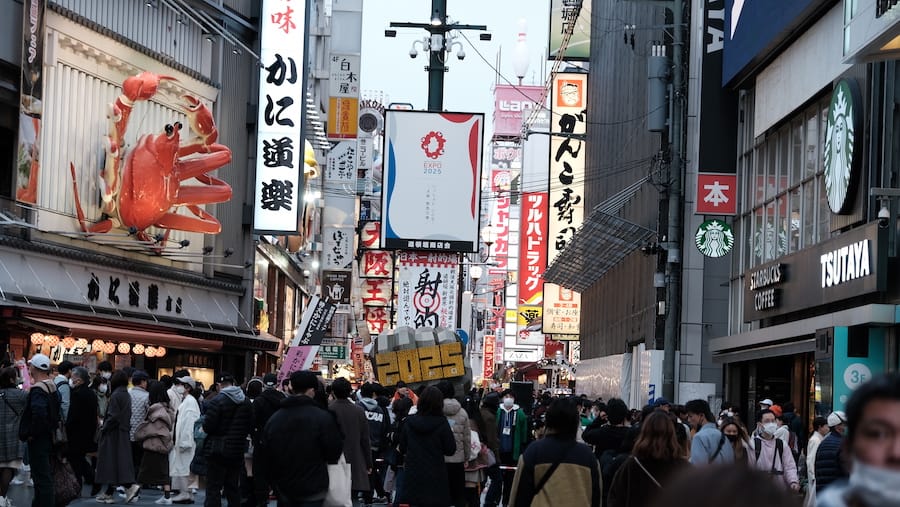
Day 3: Nara Deer Park, More food hunting in Osaka
We went to SAKImoto Coffee again on this day, and also bought some bread from SAKImoto Bakery which was just opposite the cafe. If you are looking for something warm for breakfast, check out Chitose Udon in Namba, where locals start forming a line more than 1 hour before the opening time.
Nara Deer Park – a possible day trip from either Osaka or Kyoto
Let’s slow down today and head to Nara to visit the deer park. It only takes 40 minutes from either Osaka or Kyoto to get to Nara, and is an ideal day trip for first-timers. We wanted to spend at least 2 nights in Osaka, hence we came here before our Kyoto part of the trip.



Once you get there, walk towards the deer park where you will find vendors selling nutritious crackers that are designated for visitors to purchase to feed the deer. The deer are free roaming in the parks and it was a very new experience for us to interact with these cute animals up close. Some of them seemed to be full and did not react to us offering them the snacks.
Lunch and shopping in Higashimuki Shopping Street
As with most touristy places in Japan, you will need to get to the popular restaurants early to avoid disappointment. We went to Soba-dokoro Kitahara, a cozy traditional soba restaurant, at 1:30pm and waited for 2 hours to get seated as they were short-handed.





Despite that, it was a good dining experience as we got to try soba-yu, a type of rich and savory soup made with your remaining soba dipping sauce. We also enjoyed the tempura and sake that complemented our soba meal perfectly.
If you have more time you can make a visit to the other iconic shrines like Todaiji and Kasuga Taisha, where you will find beautiful historical architecture and gardens. Before you head back to Osaka, drop by the Higashimuki Shopping Street. It is also a great place to have lunch as you have many options.


There are also stores selling Japanese sweets like dango and mochi. There is a small shop called Nakatanidou where you can watch them demonstrate the traditional Japanese method of pounding mochi, and buy some freshly made mochi topped with nutty powder.
A special Yakiniku dinner
Finally, we head back to Osaka to rest before a lovely dinner at Matsusakagyu Yakiniku M. It is a premium yakiniku restaurant with enclosed 2-person rooms where you can enjoy delicious barbecue and excellent service. There is a minimum order of 1 set per person with prices starting from around 7,800 Yen before tax. You can be assured of the best meat quality and a cosy atmosphere.






The cherry on top was the delicious Matsusaka Beef garlic rice served in a stone pot. It was the perfect meal to conclude the Osaka portion of the trip. Do make reservations ahead of time, especially if you are planning this for a special celebration.
Day 4: Travel from Osaka to Kyoto, explore Nijo castle and Gion district
Morning trip from Osaka to Kyoto via train
After checking out, the journey from Osaka to Kyoto will take around 1-hour. I recommend staying at Piece Hostel Sanjo because of the good service (English-speaking), great location, and affordability given the quality of the rooms. We paid around 6,000 Yen per night for a double room with shared bathroom. Check the latest prices for Piece Hostel Sanjo on Agoda, and you might find a great deal for your Kyoto accommodation.


They have female-only and all-gender bathrooms and showers, a well-renovated open kitchen for shared use, and cosy lounges to hangout with your takeout food. If you arrive early before the check-in time, they can help to store your luggage as you head out to explore the city.
Obanzai-style brunch
When we arrived in Kyoto at around 10:30am, we decided to grab a healthy brunch at Obanzai Nomura Nishiki, which was on the way from the station to our accommodation. Obanzai is a traditional Kyoto style of cuisine with small dishes served along with rice and soup. The ambience is nice and quiet, and some seats are on tatami mats in rooms with traditional interior design.


You can also make a visit to the nearby Nishiki Market where you can find various types of seafood. It is a great place to shop for souvenirs as well. After filling our stomachs, we dropped off our bags at the hostel and went to HUMAN MADE 1928 Cafe by Blue Bottle Coffee.
Nijo Castle




Similar to Osaka, there are many cultural sites to visit in Kyoto. Nijo Castle is the one you should not miss. It has great significance in Japan because it is the former residence of the Shogun. A Shogun is essentially a very important military leader in that era. Here, you get to tour inside the castle and imagine how times were like in the past. The beautiful architecture and gardens are also quite therapeutic. There is even a cherry blossom park with rows of these trees for those who are here in Spring.
Wandering Gion District, getting dinner and dessert
Next, we head on to the famous Gion district to try catching a glimpse of Geishas and their apprentice Maikos. Aside from that, visiting at sunset has a magical feeling as you walk along the cobblestone paths.
There are excellent photo opportunities where you can capture the Hokan-ji Temple in the backdrop of these streets. Locals and foreigners like to dress up in kimonos when they visit Kyoto, which helps to add colour to the crowd. I recommend wandering along Yasaka-dori, Nineizaka, Sanneizaka.



If you are a matcha-lover, you will be happy to know that there are tea ceremonies you can join. One of the highly rated places is Tea Ceremony Camellia FLOWER in Gion. They offer both private and group sessions, though you will likely need to book and pre-pay before the actual day. Other tea shops include Tsujiri Tea House where you can buy souvenirs.



After a long day, we sat down at Tokkyu Ramen for a hearty bowl of ramen. There are vegan options here as well. The service was fast and we thoroughly enjoyed the authentic simplicity of this shop. To end the day, we crossed the Kamo River to get a Matcha ice cream cone at BABBI GELATERIA KYOTO. We walked and talked the remaining 15 minutes of the way back to the hostel.
Day 5: Arashiyama Bamboo Forest, Bonsai garden tour
We set off early today to arrive at Arashiyama Bamboo Forest by 8am, which is located 45 minutes away from central Kyoto by train. There were barely any shops open at that time, so you might want to pack a snack before you go.
Strolling through Arashiyama Bamboo Forest and breakfast
The famous Arashiyama Bamboo Forest is just a short stretch of walking path. It is better to arrive early as it will be more serene. By the time we were done taking photos and turned back, we saw that there was barely any space for people to take a photo without others in the background. Aside from that, I still recommend first-timers to visit and witness the majestic bamboo trees.

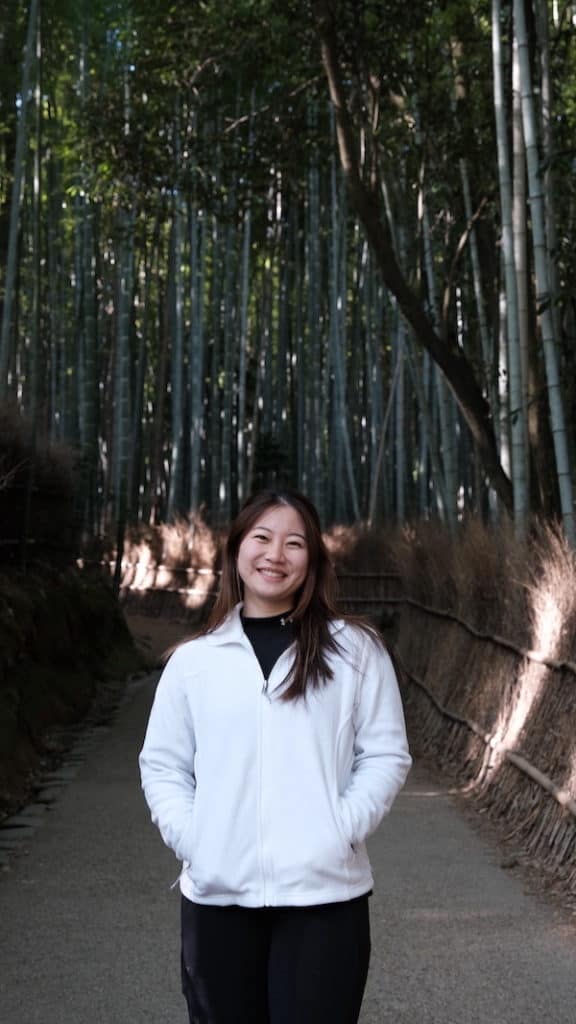
If you want to escape the crowd that will be pouring into Arashiyama town, head over to BREAD, ESPRESSO & ARASHIYAMA GARDEN. This cafe serves delicious breakfast sets and coffee, and is situated within tranquil Japanese gardens. We got a seat easily when we were there at 9:30am, which is another advantage of starting the day early.



Food and sights outside the Bamboo Forest
Continue on toward Togetsu-kyo Bridge, where you can cross towards the Arashiyama Monkey Park Iwatayama. We chose to give this a miss because we have seen monkeys multiple times in Singapore. Nonetheless, the scenery here is very calming and you can also go on a boat tour along the river. Coffee lovers will be thrilled that % ARABICA Kyoto Arashiyama is located at the river shore.



For lunch, we head out to Otsuka steak which is another 15-minute walk away. That’s right, it’s good to exercise before your meals. It is often described as a hidden gem where you get high quality beef at a good price. A short plate beef bowl set costs just around 2,000 Yen. As usual, try to make a reservation before heading over. In our case, we had an early lunch so there only a queue outside when we were leaving.
Visiting the star-studded Bonsai Garden in Daitokuji Temple
Next, we head to North Kyoto where you can visit the famous Kinkaku-ji Temple and Daitokuji Temple. Located just 40 minutes away from Otsuka, we chose to visit the Bonsai Garden in Daitokuji Temple as we wanted to spend unhurried time here. It is the first bonsai garden established within a zen temple, and houses an impression collection of old bonsai.
The entrance fee to this garden is only 1,000 Yen, yet the richness of the bonsai here is immeasurable. The oldest bonsai is an 800-year-old Japanese yew, and there are many others that are 250 years old. I cannot imagine the amount of work generations of families put in to shape each tree to its current form. It is truly a living art that celebrates patience and years of devotion.






Day 6: Fushimi Inari Shrine, Sake Tasting, Shopping
Fushimi Inari Shrine has thousands of vibrant red torii gates that lead up the trail towards Mount Inari. Aside from being excellent for photos, they offer a unique atmosphere of serenity as they wind upwards through the forest. We decided to climb all the way to the top for the full experience. We started our day at Fushimi Inari Shrine at 7am, giving us sufficient time to walk at our own pace before a bigger crowd arrived. I enjoyed being able to take photos slowly and create memories without the pressure of people waiting behind.




Thankfully, the path down was a gentler slope down the looped trail. Stores begun to open by that time, selling souvenirs, drinks and snacks for visitors to get an energy boost. We continued out of the shrine area to get breakfast at Komeda Coffee. Originating from Nagoya, this coffee chain offers a charming setting for coffee and sandwiches.
Visiting Gekkeikan Sake Museum in Fushimi
Next, we head to South Kyoto to visit the Gekkeikan Sake Museum, which is only about 15 minutes away by train. Fushimi area is one of Japan’s leading sake-producing regions, and Gekkaikan played an important role. For just 600 Yen per person, you will receive a sake cup and 3 sake-tasting tokens. Sake enthusiasts will enjoy learning about the process of sake brewing and its history. Another interesting place to visit in Fushimi for sake tasting is Fushimi Sake Village. This is a multi-room style restaurant with over 100 types of sake you can try.
Shopping in Kyoto
As you come back to the city, check out the malls around the main station. Uniqlo is one of our favourite brands, and we purchased some of their clothes that we could not find online. There are also interesting items at Tokyu Hands such as a Black Pine starter growing set. Other interesting shops to check out include this Columbia Factory Store that embraces the traditional Japanese architecture. Be sure to bring your passport along if you want to make tax-free purchases. This usually requires a minimum purchase amount of 5,000 Yen.


Hakone Day-Trip Itinerary
Finally, we will be leaving the Kansai region of Osaka and Kyoto, and heading towards Hakone and Tokyo. Hakone is a scenic area near Mount Fuji that is accessible to Tokyo via day trips. Hence it is the perfect stopover for an immersion into the vast natural landscape of Lake Ashinoko.

Tips for transporting your luggage from Kyoto to Tokyo
One of the best tips for such a trip is to have your luggage transported from your hotel in Kyoto to your final destination in Tokyo. This is a service that is commonly offered by the hotels, and has become increasingly popular. I highly recommend this so that you can have a comfortable journey on the trains and buses. You will also not have to worry about the baggage size restrictions onboard the trains.
If you need extra confirmation, you could enquire with the hotel staff about this service upon booking. Most established hospitality chains will be able to help you with this. Otherwise you could head to convenience stores to get this done, though I have heard of people having difficulty this way due to a language barrier.
During our check out process at Piece Hostel Sanjo, we requested for this luggage forwarding to be done. The hotel staff got us to write down our hotel details and measured our luggage dimensions. They also made a call to the hotel that we wanted to send our luggage to in order to confirm our reservation. Finally, we paid about 2,000 Yen for each bag and the hotel staff handed us our delivery receipts. The actual price may vary depending on your luggage size.
That’s it – and all we did from then was track the luggage locations via our Apple AirTags for peace of mind. We could even see when they arrived in our Tokyo hotel.
Day 7: Go to Hakone via Shinkansen, Pirate cruise on Lake Ashinoko, Onsen experience
After settling the luggage forwarding with the hotel, we brought our day bags and made our way to Kyoto Station to purchase our Shikansen train tickets.
Purchasing Shinkansen bullet train tickets for Kyoto to Odawara
We had not bought a JR Pass as we are not planning to make another long trip back. That meant that it was more economical for us to buy stand-alone tickets. Besides, the ICOCA cards made it very convenient for us to just tap in and out. I recommend arriving to the station 1 hour ahead of your scheduled ride if you need to purchase a ticket at the station.
The Shinkansen bullet train ride from Kyoto Station to Odawara only takes 2hr 5min via the Hikari train type. Remember to check the schedule for these Hikari trains, and make it for the correct timing. Do also look out for the train type before boarding so that you do not take the slower train by accident. Even though you might see other trains with the same destination, they might stop at several intermediate stops. This extends the travel time substantially.
Trying Ekiben bentos from the train station
Eating Ekiben bentos on a Shinkansen bullet train ride was something we looked forward to on this trip. They are traveller meals that are sold in the major train stations. In Kyoto, you can find them either before or after you enter the paid area. They are inexpensive and high quality nonetheless. If you have some time as you transit through the station, I highly recommend looking out for shops that sell Ekiben bentos and try one for your journey. There are also bakeries in the station if you are not too hungry.



Buying the Hakone Free Pass at Odawara
The easiest way to get around in Hakone is via the Hakone Free Pass. You can purchase it from a Tourist Service counter at Odawara, and it costs 5,000 Yen for 1 day. This gives you access to the Hakone Tozan Railway, cable cars, ropeways, and boats. This helps you to save on hassle and cost.
From Odawara, head onward to Hakone-Yumoto Station, the main entry point for the Hakone area. From there you can hope onto the bus service that will take you to your first stop.
Enjoying nature in Hakone and Onsen
We arrived in Hakone after lunch time, which meant that we did not have the full day to visit the exhibitions or museums in Hakone. For reference, it takes about 1 hour to get from the Hakone-Yumoto station to Lake Ashinoko via bus.



If you have more than one day in Hakone, here are some attractions to check out:
- Hakone Open Air Museum
- Owakudani Valley via the ropeway
- Hakone Shrine
- Lake Ashinoko
My favourite experience was the pirate cruise along Lake Ashinoko. With the Hakone Free Pass, we could go from Togendai port to both Motohakone and Hakonemachi port. As you travel along the lake, look out for Mount Fuji in the direction of Togendai port. You might be able to see it on a clear day, perhaps even snow-capped. Closer to Motohakone and Hakonemachi, you can also catch a glimpse of the bright red Hakone Shrine.
Dinner and breakfast options in Hakone
Booking an accommodation near the lake gives you the chance to take a walk by the water during sunset. Hotel Musashiya is an affordable option located near Motohakone port, and just a stone’s throw away from the lake. You get to enjoy the lake view from your room and opt to stay indoors instead. There is also an Onsen on the top floor of the hotel which overlooks the lake. You can also check out other unique ryokans in Hakone on Agoda.


There is an option to have both dinner and breakfast provided by the hotel, though it will not be cheap. This could be a good option for dinner because the restaurants tend to close early before sunset. Alternatively you can grab a cheap meal from the nearby convenience stores.
As for breakfast, I would recommend getting the hotel breakfast. They usually serve traditional Japanese breakfast which will be a unique experience.
Tokyo 2-Day Itinerary
The next day, we made our way back to Odawara Station via bus, and continued on to Tokyo via the Shinkansen bullet train. The journey will take between 1.5 to 2 hours depending on where you plan to go in Tokyo.
There are no rules about the type of activities you should do and places to visit in Tokyo. Here are some ideas for first-time visitors to Tokyo.

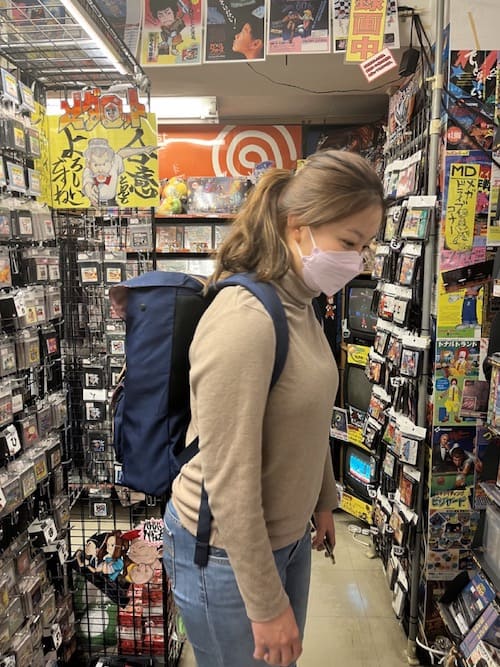




- Shopping for collectibles and electronics in Akihabara
- Admire the modern design of Odaiba
- Experience the thrill of the Shibuya road crossing
- Breakfast and coffee at Tsukiji Market
Where to stay in Tokyo
Best for skyline view and famous attractions: Odaiba ($$$)
Odaiba felt like an upscale area because of the international name hotel chains there. The trains were different, and the streets feel much less crowded. It is a great place to stay if you want to have a breather from the busy city center.
You can enjoy the skyline across the sea during sunset and watch the city lights come on. It is a popular choice with families as well because of the nearby attractions like the Rainbow Bridge, the giant Gundam, and Tokyo Disneyland. Those who love shopping will also be happy to know there are many huge malls here.
We stayed at Hilton Tokyo Odaiba and highly recommend it for the ocean view and balcony area. The lobby was also very bright and inviting.
Best for food, shopping with connectivity to Mount Fuji: Ikebukuro ($) or Shinjuku ($$)
If all you care about in Tokyo is eating and shopping, look no further than the Shinjuku to Ikebukuro area.
Although Shinjuku is a little bit more expensive due to its popularity, you save a lot of time and energy just because it’s a major transport hub. It also connects you easily to Mount Fuji area with the highway bus services. You can browse Shinjuku hotels here on Agoda.
Ikebukuro is also a great choice for budget conscious travellers, and you can also spend a lot of time at the Sunshine City mall. If you love anime and all kinds of cartoon (like Disney and Sanrio), I think Ikebukuro will be a hit.
We stayed at the Sunshine City Prince Hotel in Ikebukuro for 5 nights and love that there’s a convenient store just downstairs. It also happens to be in the same building as Sunshine City hotel, hence the name. You can grab a quick breakfast in the mall before heading off for your adventures. Check the latest prices and deals for Sunshine City Prince Hotel on Agoda.
Best for cultural scene and connectivity to Nikko and Narita airport: Asakusa ($)
There are many affordable accommodations here including the APA hotel chain. You can easily find a room that enjoys the river view and is near the train station. It’s also a popular place for culture and good food without too much crowds, and is also a convenient place to get to Nikko National Park for a day trip. You can also take a direct train to Narita airport from Asakusa.
I share more about what you can do in Asakusa later on in this post. Meanwhile you can check out hotel options in Asakusa on Agoda.
Day 8: Shinjuku and Ikebukuro shopping, dining and bar-hopping
Shinjuku is one of the best places to stay because of its transportation connectivity, especially if you plan to make other day trips to the Mount Fuji area. There is so much to do in Shinjuku and you can find a wide variety of shopping and food options. My personal favourites are shopping at flagship stores, exploring izakayas, and searching out the best Japanese cuisine.
Shop for anything and everything in Shinjuku
One of the shops that blew my mind here was Alpen Tokyo. This flagship store in Shinjuku spans 8 floors, and has a huge range of outdoor gear. They carry gear made in Japan as well as all kinds of popular international brands. The best part is tax free shopping! Whether you are a solo hardcore camper, a casual outdoor person, or a family tripper, Alpen Tokyo will definitely have something for you.
Another cool shop to explore is Shinjuku Hands. You can find almost anything you need there, be it travel supplies, home decor, toys, plant items, and more. It is easy to get lost in the various sections and also a great place to shop for practical gifts and souvenirs.
Shinjuku izakaya, yakitori and bar hopping
Omoide Yokocho is one of the unique alleys in Tokyo that exude a uniquely Japanese charm. As the sun begins to set, store lights and lanterns turn on, making it a cool place to walk through and take photos. It is not a big area, and you will see small yakitori shops with 4 to 7 customers seated in each shop.
We went there in summer and sitting directly in front of the grill was like sitting in a sauna. There was also a minimum order of 2 skewers per person, and we took the chance to try a variety of items. Overall, it was a fun experience drinking whisky highball and enjoying some beef and fatty pork cheek skewers.
Afterwards, we went to Bar Composition to chill in air conditioning and enjoy some cocktails. This is one of the many bars you can explore in Shinjuku, and you could even sign up for bar hopping tours. The interior decor mimicked a forest environment with spa-type nature atmospheric sounds playing in the background. Our cocktails incorporated Japanese ingredients and were visually appealing, and the bar snacks were so tasty. I recommend this place for a quiet evening of chill drinks.



Visit Sunshine City in Ikebukuro if you love Studio Ghibli, Disney, Sanrio, and anime
Ikebukuro, slightly north of Shinjuku, is also a fun place to be with Sunshine City as one of the popular shopping complexes there. Did you know that there is an aquarium, a planetarium, as well as a museum there? Studio Ghibli lovers will also be delighted to find one of the official Ghibli stores, Donguri Kyowakoku, in Sunshine City. At the same time, you can visit the Disney store and Sanrio cafe all in the same mall.
Dine at a standing sushi bar at Ikebukuro station
Standing-only sushi bars are small cosy stores that people go for a quick sushi meal. I highly recommend Midori Sushi Echika Ikebukuro which is located in the underground linkway of Ikebukuro station. We spent about $27 SGD per person and tried so many different kinds of high quality sushi. The atmosphere was quiet and service was efficient. There are people eating alone as well, which seems to be quite a common thing here in Japan.
Day 9: Explore Asakusa’s traditional yet trendy streets for shopping and food
Asakusa is a charming area in Tokyo that embraces its traditional culture. You can find people dressed in Kimonos (including tourists), and rickshaw pullers taking people around for sightseeing and photo taking. It reminds me a little bit of Osaka and Kyoto, with a lot more dining options in the same area. If you are flying from Narita Airport, Asakusa station offers a direct train ride there.
Shopping in the Senso-ji area
Senso-ji is the famous shrine in Asakusa that most people come to see. There is a shopping street called Nakamise-dori where you can find souvenirs and street snacks. We bought Japanese Ukiyo-e art inspired postcards and also tried some red bean filled doll cakes (ningyoyaki).



Aside from walking down this crowded street, I recommend checking out Asakusa Menchi for their tasty fried pork croquet. If you need a break from walking all day, Coffee Tengoku serves pancake and coffee sets that will satisfy your sweet tooth. We also enjoyed the espresso based coffee at Sukemasa Coffee.


Try the famous Asakusa Gyukatsu
You have probably seen this hyped up on social media before – a restaurant where customers can grill beef steak cutlets on stone plates. There are several outlets in Tokyo, and this one is near the Asakusa station.
The best part is, prices are quite affordable despite its popularity. Set meals start from 1,930 Yen ($19 SGD) for a 130g portion of beef, and 3,060 Yen ($29 SGD) for 260g. They come with 3 side dishes – grated yam, spicy cod roe, and warabi mochi. You can even request for a free one time refill of barley rice. It was a really enjoyable experience and I highly recommend this as a must-try.
The waiting time can get quite long, so you should come here at off peak times. This might be because they like to seat all the customers at the same time and clear out the venue completely before letting in the next batch of customers. The restaurant space is also pretty small, but it gives you a sense of exclusivity. Like “wow, I managed to get a seat in this Gyukatsu restaurant to enjoy such exquisite cuisine!”



Which cities did we like the most – Osaka, Kyoto, or Tokyo?
Personally, Osaka and Kyoto really blew me away. I love that I can get amazing food anytime in Osaka, and that Kyoto showcases Japanese culture and aesthetic. If you need a peaceful getaway, I highly recommend Kyoto.
Hakone would make a nice nature-filled weekend trip for anyone who lives in Tokyo, though it can be a little expensive. Last but not least, Tokyo is a vibrant place with excellent food, service and efficiency. There is something for everyone in this city, no wonder it’s such a popular destination.
I hope you enjoyed this first-timer’s itinerary for Osaka, Kyoto, Hakone and Tokyo. Let me know what you think in the comments, and if you need a trip planner I’d be happy to help! Drop me an email at janice@wheresjanice.com
If you liked this post, check out:
- Amazing Japan Hiking Trips For Mountains, Lakes and Islands
- How To Explore Asakusa and Ueno For First-Timers
- A First Timer’s Guide To Hokkaido: Daisetsuzan & Furano
- 3 Days In Hokkaido Lake Camping & Onsen Hopping
- Sapporo 1 Day Itinerary (Fun Guide To Bicycle Sightseeing)
- 9 Unique Souvenirs To Buy From Japan That You’ll Actually Want
- Nikko 2-Day Itinerary: The Best Way For Nature Lovers
- Unforgettable Food You Need To Try in Tokyo
- Beautiful Tokyo Hiking Day Trips You Need To Try In Summer
- How To Go Hiking In Mount Takao: 8 Trails To Explore




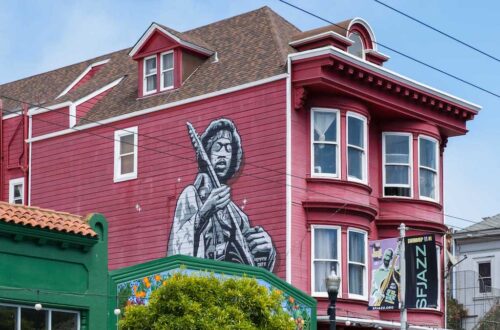

6 Comments
Ivy
Love this article ! Thanks for sharing and where did you stay in Tokyo?
Janice
Hi! We mainly stayed in Prince Hotel Ikebukuro (Sunshine city)
Alan lee
Thank you so much for sharing your itineraries with so many details and explanations. We’ll be landing on Osaka on 20/02 and departing from Tokyo on 01/03. Thus we have full 9 days of touring from Osaka – kyoto – Tokyo. Will go nara, hakone if time is enough. Mt fuji is a must for us.
Janice
Hi Alan, I’m glad this was useful! 🙂 Sounds like a super fun trip! Hakone is close to Fuji, great choice! Seems like you’ll see snow on Mt Fuji during that time
Berwick
Hi Janice, when was this trip done? I plan to go in Dec, would this itinerary be applicable in winter?thanks
Janice
Hi! We went in March, but I believe winter should be fine too! Just take note to check the closing times for various places during winter as they typically have shorter hours. Otherwise, winter time onsen and seeing Mount Fuji would be really nice!